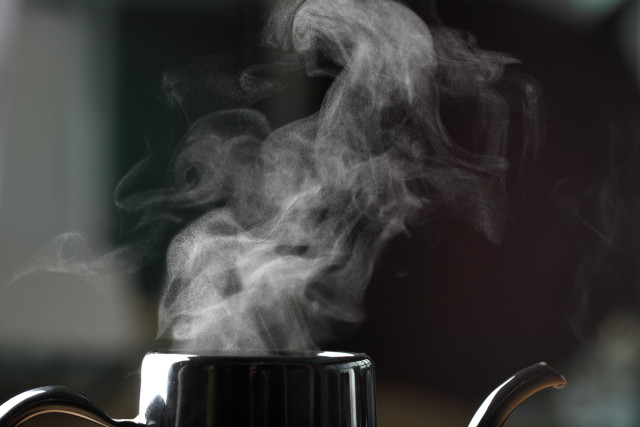5 Mistakes You Made Brewing Your Coffee This Morning
A few tips from a guy who has been there
Mornings are tough. There are no two ways about it.
Most of us have to get up before we want to, and there is really no way to put a silver lining on that. What you can do, however, is carve out a small chunk of time to make yourself a fantastic cup of coffee. I promise you, it will help make your mornings better.
But the problem is this: Given our zombie-esque state at that time of day, it can be hard to realize our higher aspirations for noble brewing. Here are a few tips from a guy who has been there.
1. A watched kettle doesn’t boil…
… and an impatient brewer will still try to make coffee even if the water is too cold (especially in the morning, when one’s in a rush, exhausted and blurry-eyed). This underrated—yet important—step will test your commitment to a great cup of coffee. If you pull the water off before it gets to a boil, it will be too cool to properly pull flavor and depth from your delicious coffee beans.
Pro tip: Fill your kettle the night before, so all you have to do is turn on the flame. Now, you’ll have plenty of time to measure out your coffee, locate your favorite mug, and maybe even put your socks on.
2. Beans, beans, beans.
There is no way around it: Quality ingredients are crucial. (And that goes for everything in life, not just coffee.) At 6 am, it may be all you can do to pull that bag of coffee you bought two months ago out of your cupboard. (We get it.) But you’re missing out on the chance to see how transcendent a cup of coffee can be. Don’t force yourself into having to think about whether you have good coffee or not: Just set yourself up so you never run out.
We love Blue Bottle at Home because it’s ours, yes, but also because it takes the guesswork out of having the most beautiful ingredients at the ready. It comes to your door at a frequency that makes sense for your morning routine, and we throw in some coffee stories and sweet surprises occasionally, too. Flavor cannot be underestimated, and flavor only comes with precise timing. We test every coffee we sell, and then we only sell it to you on the day that it will be most delicious—whether that’s one, two, three, or four days after roasting.
3. A little bit of precision goes a long way.
Coffee is not rocket science. Heck, brewing a good cup isn’t even as difficult as assembling Ikea furniture (no offense, Ikea). It does, however, ask for a modicum of attention. You need to use a certain amount of coffee and a certain amount of water, as with any recipe. This is what we call the coffee-to-water ratio.
The nerdier folk among us in the coffee world (Hello, everyone at Blue Bottle training and quality control!) use a digital scale to figure these things out, and then we concoct a ratio that makes a cup of coffee that will be just the right strength. If the idea of a scale seems too sci-fi (although, I promise, it’s actually easier), you can also use tablespoons and measuring cups. Here is a cheat sheet to protect your early-morning brain:
Coffee-to-Water Ratio Cheat Sheet
If you like light strength...
1 g coffee : 16 g water
(For a 10-oz cup) 22 g coffee : 350 g water1 tbsp coffee : 3 ounces water
(For a 10-oz cup) 4 tbps coffee : 12 oz waterIf you like it stronger...
1 g coffee : 12 g water
(For a 10-oz cup) 29 g coffee : 350 g water1 tbsp coffee : 2 oz water
(For a 10-oz cup) 6 tbsp coffee : 12 oz water*Note, tablespoon measure is for ground coffee.
4. Not all grinds are created equal.
My guess is that if you’re brewing coffee at home, you’ve already heard that grinding your beans is a good idea—nothing new there. The little secret that no one ever talks about, however, is how to adjust your grinder so you can be sure you’re getting the most out of it. If you are using the right recipe, and your coffee still tastes thin and sour, chances are you need to grind your coffee more finely. If your cup is thick and bitter, you need to grind more coarsely.
Burr grinders typically have numbers that indicate the coarseness of the grind. With blade grinders (not our recommended type), it’s a matter of how long you grind your beans (longer = finer). My technique for burr grinders is this: Right after I take my first sip, I go back to the grinder and nudge it in the direction the flavor of that sip indicates. Each day, you’ll come a bit closer to transcendence.
5. All you need is love.
Okay, that’s not really all you need. You need beans, you need something to brew with, you need a drinking vessel. But you do also need love.
Indifference can make even the best coffee and the best tools in the world fail. Paying attention to the details, following the steps, slowing down just a bit so you’re not rushing, carving out the right time—this is what makes the difference.
Those 10 brief minutes that you have to yourself in the morning to make a truly delicious cup of coffee—those are for you. Enjoy them to the fullest, and brewing your morning cup may become something more meaningful than a daily hit of caffeine.

